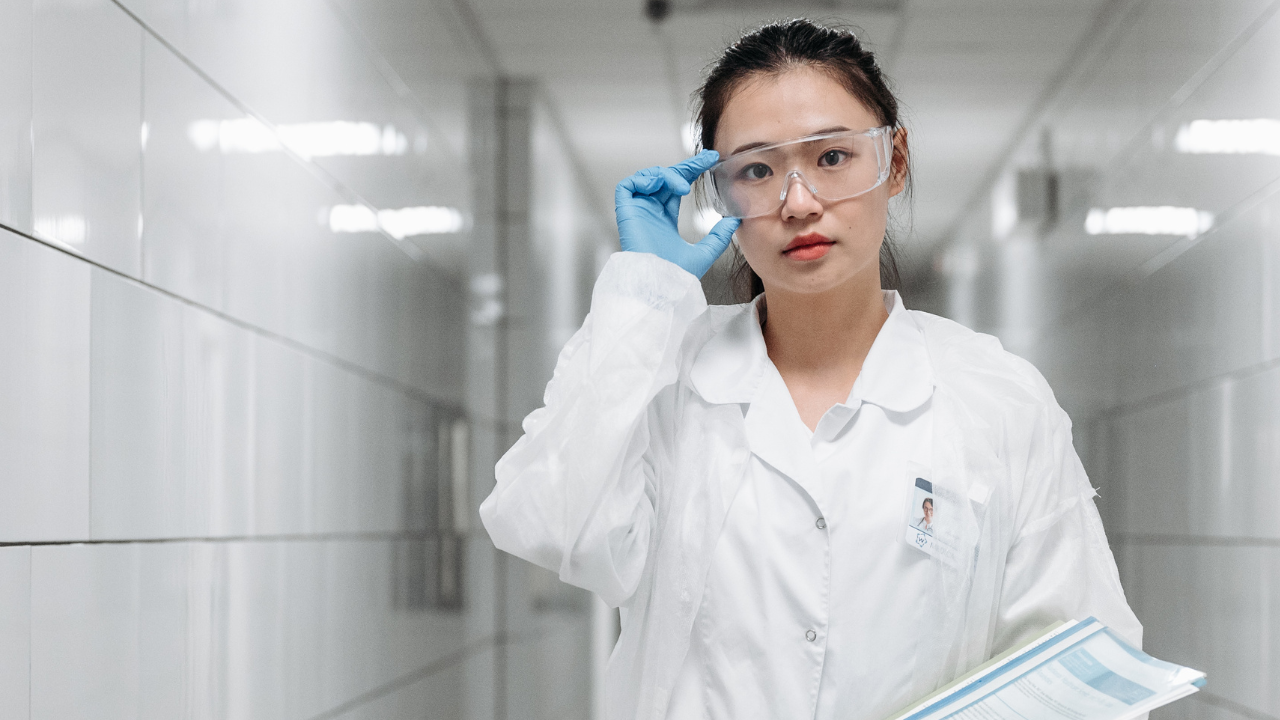What does the future look like for wearable health technology?
19 Jun, 20247:54In the healthcare technology industry, wearable devices have emerged as pivotal tools in enh...

In the healthcare technology industry, wearable devices have emerged as pivotal tools in enhancing patient care and improving health outcomes. The integration of wearable technology within healthcare settings and personal wellness routines underscores a transformative shift towards more proactive and personalised medicine. As these devices evolve, they offer the potential to monitor vital health metrics in real-time and pave the way for predictive analytics in disease management. The significance of wearable devices in healthcare cannot be overstated, promising to redefine the paradigms of patient monitoring and health data analytics in ways previously unimagined.
Current Market Size and Future Projections of Wearable Healthcare Technology
The market for wearable healthcare technology has shown significant growth, with its valuation at approximately $115.8 billion in 2021, projected to escalate to $380.5 billion by 2028. In 2022 alone, around 320 million health wearable devices were shipped globally, and this figure is expected to increase to approximately 440 million by 2024. Notably, wearable technologies are anticipated to reduce hospital costs by 16% by 2027, potentially saving up to $200 billion in 2037 through remote patient monitoring devices.

Growth Potential and Analysis
The wearable healthcare devices market is poised for substantial growth, with a forecasted compound annual growth rate (CAGR) of 11.2% from 2023 to 2028, raising the market value from $40.7 billion to $69.2 billion. This growth is driven by the increasing adoption of technologies such as 3G and 4G networks that ensure uninterrupted healthcare services, alongside the rising availability of smartphone-based healthcare applications. The North American region also remains dominant due to factors like an ageing population, rising healthcare expenditures, and government initiatives promoting digital health. The global market for AI in healthcare, which includes wearable technologies, is also expected to reach USD 148 billion by 2029, illustrating the sector's broadening scope and impact.
Technological Advancements Driving Growth
Role of AI and 5G
AI and 5G technologies are enhancing the capabilities of wearable healthcare devices. AI-driven platforms utilise machine learning algorithms to provide accurate health diagnoses and continuous monitoring, significantly reducing the need for human intervention. Medical technology can use patient data to monitor irregularities, using data to make predictions and provide recommendations to doctors in real time.
Concurrently, 5G technology supports high-speed, low-latency communication, enabling real-time data transmission crucial for remote patient monitoring and telemedicine. This improves the efficiency of healthcare delivery and ensures timely interventions, which are essential in emergency healthcare situations.
New Product Developments
Recent advancements have seen the launch of innovative products such as the Google Pixel Watch 2 and Apple Watch Series 9, equipped with enhanced health monitoring capabilities. Additionally, Philips has introduced the Avalon CL Fetal and Maternal Pod and Patch, which offers continuous, non-invasive monitoring, showcasing the rapid development of wearable healthcare technology. Continuous glucose monitors have recently received FDA approval to support patients with diabetes and other conditions. And companies like Fitbit who specialise in wearable healthcare technology continue to add innovation to their products that are focused on health monitoring, incorporating AI and more comprehensive tracking into their solutions.

Impact of 3G/4G Networks
The adoption of 3G and 4G networks has been instrumental in the widespread deployment of wearable healthcare technologies. These networks ensure uninterrupted connectivity, which is essential for the effective operation of real-time health monitoring systems. While 5G is set to be the new standard, there are still limitations on its deployment and use. Older 3G and 4G technology is still valuable in regions where 5G is not available. It is cheaper to deploy and more accessible globally.
Market Dynamics
Drivers of Market Growth
The wearable devices market is experiencing significant expansion due to several key drivers. Increasing awareness about lifestyle management and the rising prevalence of chronic diseases among the ageing population are major factors. Technological advancements, such as enhanced sensor capabilities, improved connectivity, rising healthcare expenditures, and government initiatives promoting digital health, are further propelling this growth.
Challenges and Restraints
Despite the opportunities, the market faces challenges, including data accuracy and analysis issues. Wearable devices often struggle with calibration and may provide imprecise or false readings due to limitations like motion artefacts and signal interference. Data security is another critical concern, as the sensitive information collected needs robust protection against breaches, especially when stored in cloud-based systems.
Opportunities in the Market
Integrating AI and 5G technologies presents significant opportunities for the wearable devices market. These technologies enable real-time, reliable data transmission and processing, enhancing the functionality and application of wearable devices in healthcare settings. Additionally, developing advanced battery technologies promises to overcome device longevity and efficiency limitations, potentially opening new avenues for market growth.

Regional Market Performance
North America
North America continues to lead in the wearable healthcare devices market, attributed to its robust infrastructure and the presence of major industry players. Advanced technological adoption and significant healthcare spending further support the region's market dominance. In 2022, North America held the largest market share and demonstrated a solid commitment to innovation, evidenced by crucial product launches and strategic partnerships.
Europe
Europe's market for wearable medical devices is projected to reach USD 22.75 billion by 2029, growing at a CAGR of 15.41% from 2024 to 2029. The market growth is driven by technological advancements, increased health awareness, and substantial investment in healthcare infrastructure. Germany and the UK are expected to see significant market expansions due to ongoing research and development efforts and governmental health initiatives.
Asia Pacific
The Asia Pacific region is anticipated to register the highest growth rate in the wearable medical devices market during the forecast period. This growth is primarily due to the rising demand for remote patient monitoring and increasing health consciousness among the population. Countries like China and India are pivotal to this growth, with their large populations and increasing prevalence of chronic diseases necessitating advanced healthcare solutions.
Rest of the World
The wearable healthcare devices market in regions including Latin America, the Middle East, and Africa is expected to grow steadily. Factors contributing to this growth include improving healthcare infrastructure and a growing awareness of the benefits of wearable technology in managing health.
NES Fircroft Supporting the Wearable Health Technology Sector
Wearable devices in healthcare represent an emerging frontier in the digital health transformation, with new possibilities for patient care and health management. The substantial growth anticipated in the next five years, underpinned by advancements in AI, 5G technology, and increasing market size and projections, signifies a remarkable shift towards a more connected, proactive, and personalised healthcare model. The potential for these technologies to reduce healthcare costs, improve disease management, and enhance patient outcomes is immense, making their continued development and adoption crucial for the future of healthcare.
NES Fircroft has supported the Medical Device Industry for over 20 years, sourcing personnel for engineering, scientific and commercial roles across the market. If you have a staffing need, our discipline-specific life science consultants will support you by providing the experts you need to continue making breakthroughs in medical device innovation and production.
If you're a scientist or life sciences professional looking to grow your capabilities in the medical device industry, browse our medical devices jobs.










